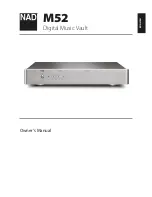
3. OPERATION
WARNING!
Ensure you read, understand and apply the safety and operational instructions before connecting the tester
clamps to the battery. Only when you are sure that you understand the procedures is it safe to proceed with the testing process
.
3.1.
PREPARATION
3.1.1.
Check the battery casing for cracks or leakage and confirm whether 6 volts or 12 volts.
3.1.2.
Clean the battery terminals.
3.1.3.
If practical, check the electrolyte levels and top up with distilled water as required.
3.2.
CONNECTION
WARNING!
Ensure the vehicle or battery is in a well ventilated area before starting to test.
3.2.1.
Attach the positive red clamp to the positive (+) battery terminal. Attach the negative black clamp to the negative (-) battery terminal.
Use the extended clamps if necessary. To ensure good electrical contact twist the clamps on the terminals two or three times. Correct
connection indication will sweep the pointer clockwise across the voltage scale; if connected incorrectly the pointer will sweep anti
clockwise. If there is no movement from the pointer, it is either a bad connection or a dead battery.
3.2.2.
Ensure that the clamp cables are clear of hot or moving engine parts, especially if a starter or charging test is required. Ventilation
slots in the tester casing should not be obstructed and the meter scale easily visible with access to the load switch.
3.3.
BATTERY LOAD TEST
NOTE!
On the first load test, smoke may be emitted from the louvres in the tester casing, this is normal and temporary.
3.3.1.
Press the load switch in; hold until meter reading stabilises, or for a maximum of 10 seconds.
Failure to release the switch inside
10 seconds may result in the switch burning out and your warranty being invalidated.
Note the meter reading and then release
the load switch.
3.3.2.
Compare the meter reading with load test chart (3.4) to determine battery condition.
NOTES:
a)
For
12 volt
batteries the green sector (fig. 1A) border is marked with nominal cranking current from 200 to 1000 amps and
stepped in 200 amp intervals. Record this figure and compare with battery manufacturer’s quoted figure to give an indication of any
deterioration.
b)
Battery performance falls at low temperatures and quoted cranking amps should be reduced by 50 amps at 20ºF(-7ºC) and
100 amps at 0ºF(-18ºC).
3.4.
LOAD TEST CHART
fig.1
Load Test Result Fig.1
Battery Condition
“OK”-Green
Battery capacity is good. May or may not be fully charged. Check electrolyte specific gravity to determine
charge state. If not fully charged, check for charging system fault (section 3.6) or electrical drain.
“Weak” or “Bad” -yellow or red,
but pointer reading steady.
Battery capacity is unsatisfactory. Battery may be either:- (1) defective or (2) partly discharged.
Check electrolyte specific gravity. If over 1.225, the battery is defective. If under 1.225, recharge the
battery and retest. If cell to cell specific gravity varies by more than 0.025 a cell defect may exist. If
charging does not bring specific gravity to full charge level, the battery is either sulphated or has lost
active material.
“Weak” or “Bad” - yellow or red,
but pointer reading falling after
10 seconds on load.
Battery may be defective. Release load switch and note the meter reaction. If the voltage recovers to 12
volts (6 volts for a 6 volt battery) or more in a few seconds, then the battery is probably defective. If the
voltage recovers slowly the battery may only be discharged. Check the electrolyte specific gravity and
proceed as above
B
T91/7.V4 Issue 1 20/08/2020
Original Language Version
© Jack Sealey Limited





















